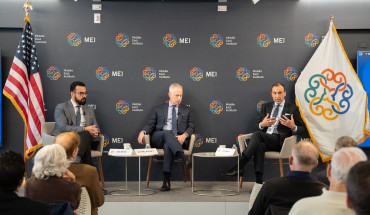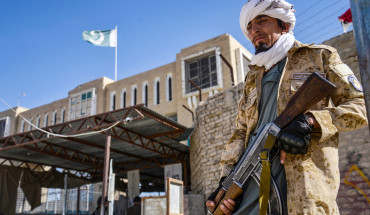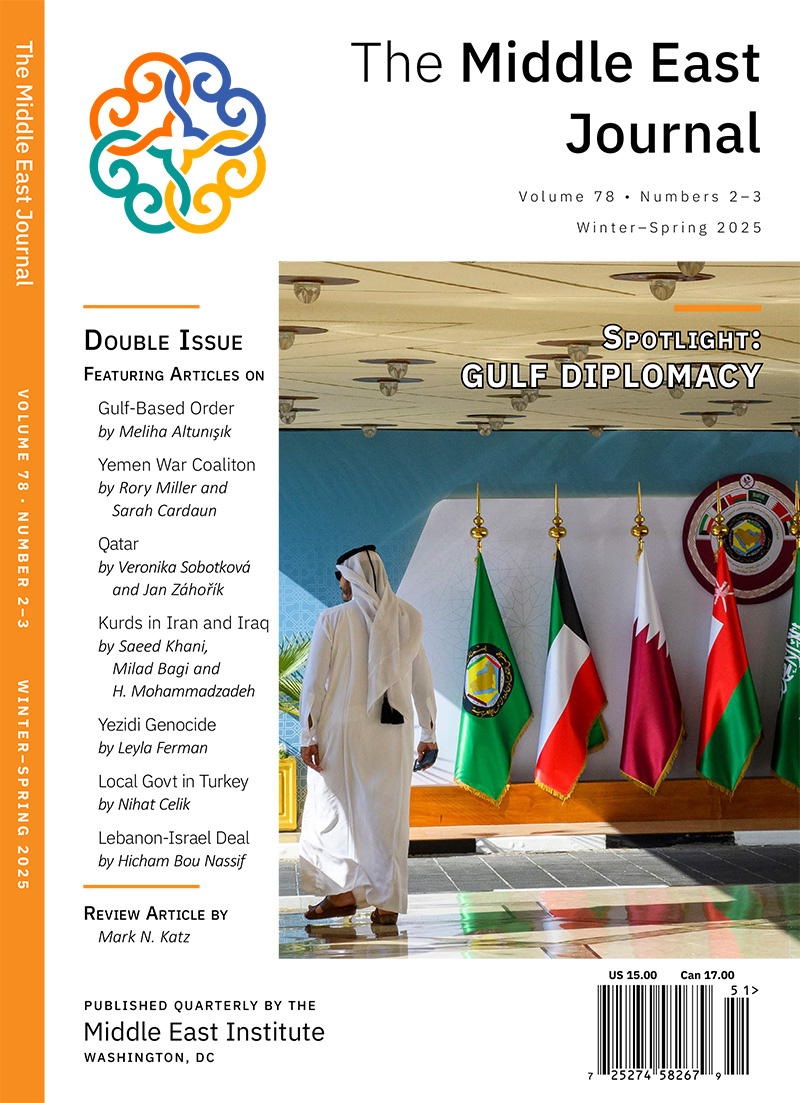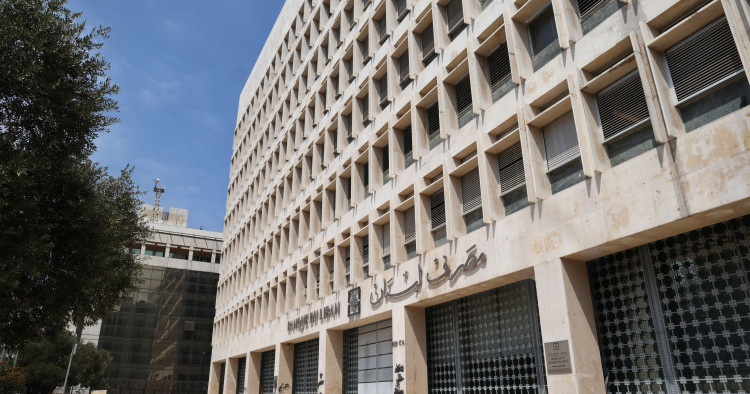The below article is part of the series "Seizing Lebanon's Moment," a joint initiative with the Italian Institute for International Political Studies (ISPI). The contributors to this series — who comprise top scholars, policymakers, and professionals from Lebanon, Europe, and the United States — set out to identify Lebanon's critical problems and propose specific reforms aimed at practitioners and officials dedicated to helping the country recover from its deep, multi-year crisis. The series has been compiled in a report, whose findings aim to carry forward the constructive policy dialogue initiated during this year's Mediterranean Dialogues Conference.
Nearly six years on from the devastating financial crisis of 2019, one of the most severe in recent global history, Lebanon continues to face persistent economic and financial challenges. The crisis is far from being resolved, constraining prospects for an economic recovery, as the implementation of a comprehensive economic adjustment and reform plan has remained elusive. Implementing an economic program supported by the International Monetary Fund (IMF) would give the country’s policies credibility, helping to ease external financing constraints and facilitating the restructuring of government debt. Yet, the measures laid out in the staff-level agreement with the IMF in April 2022 have been only partially implemented, and even though discussions on a revised program are ongoing, it is not clear whether they will lead to another staff-level agreement or when the agreement would be presented to the IMF Board. Financial assistance from the IMF under the 2022 staff-level agreement would have consisted of $3 billion over a 46-month period, a minor portion of Lebanon’s anticipated external financing needs. Since then, Lebanon’s financial challenges have been greatly exacerbated by the massive damage and displacement brought on by the war with Israel. The World Bank’s Rapid Damage and Needs Assessment 2025 Report estimated the cost of recovery and reconstruction at $11 billion as of December 2024.
The formation of a new government and the change in the leadership of the Banque du Liban (BdL), Lebanon’s central bank, have renewed hopes for institutional reform and an orderly resolution of the crisis. Parliamentary approval of the Banking Sector Recovery Law and amended bank secrecy legislation in 2025 have bolstered these hopes. These laws were important components of the staff-level agreement with the IMF and are considered essential for a resolution of the banking crisis. Notwithstanding these developments, it is still not clear whether a comprehensive financial plan will be implemented, especially given the significant vested interests that oppose it. The most intractable issue — and perhaps the main difficulty in agreeing on an IMF-supported program — is the treatment of banks and their depositors. According to certain estimates, frozen bank deposits amount to $82 billion, an amount that far exceeds the assets that Lebanese banks could use to repay them.
Even without resolving this issue or agreeing on a program, the BdL could still advance institutional and policy reforms, especially those measures that do not face opposition from vested interests. The challenges ahead are immense: The BdL is insolvent, as are almost all banks in the country, and Lebanon has been placed on the Financial Action Task Force (FATF) gray list. This gray listing could impede access to external financing and undermine incentives for foreign direct investment and could lead to Lebanon becoming blacklisted by the FATF, which would entail sanctions and serious reputational damage. Further, there are serious shortfalls in the governance of the BdL, which — together with other factors — have undermined its reputation. With a substantial part of bank foreign exchange assets held at the BdL — which cannot be repaid given its financial situation — most if not all banks are severely undercapitalized or insolvent. While many of these challenges are interrelated and would be best addressed in the context of a comprehensive adjustment program, preferably with the support of the IMF, the BdL could help to advance the resolution of the banking crisis, reform its operations, and strengthen regulations.
Resolving the banking crisis
First of all, the BdL should strongly encourage the Banking Control Commission to conduct an asset quality review (AQR) of the largest banks. An accurate understanding of the banks’ financial situation is essential to formulating a solution to the banking crisis. An AQR would assess asset values, identify non‑performing loans, and determine capital gaps. Without it, bank restructuring plans could be speculative. So far, this step has been stalled. Both the IMF and the World Bank maintain that an AQR would be important for bank restructuring plans, and it is part of the IMF staff-level agreement with Lebanon.
The financial position of Lebanese banks has changed substantially since the onset of the current crisis. Bank assets and liabilities fell sharply, and most banks face significant capital shortfalls. Customer deposits fell from $172 billion in 2009 to $88 billion in 2024. Most deposits are currently in US dollars and remain essentially frozen, while the value of deposits in Lebanese lira declined drastically with the collapse of the currency. There was also a huge decline in assets, which fell from $217 billion in 2019 to $104 billion in 2024. Bank borrowers repaid loans of about $30 billion in lira at a significantly appreciated rate relative to the market, which was effectively a transfer of wealth from depositors to borrowers as banks could no longer use these assets to pay deposits.
The Banking Control Commission — with the support of BdL — should also assess the size and identity of bank deposits. Determining the amount of bank losses, and how to distribute these losses among depositors and bank owners, is a very sensitive political and social issue with substantial vested interests. In Lebanon, deposits are highly concentrated, with over 50% held by less than 1% of depositors prior to the crisis, according to the fall 2022 World Bank Lebanon Economic Monitor. High net worth individuals (0.1% of depositors) held 20% of deposits. Deposits since the onset of the crisis have likely become more concentrated, according to the report. A detailed identification and analysis of deposits would provide valuable insights on how best to compensate depositors.
Reforming the BdL
There have been significant changes to policies that have affected the BdL balance sheet since August 2023. The decision of the bank’s leadership to stop lending to the government, together with an increase in government deposits, helped to reduce the money supply (liras in circulation and in bank checking accounts) and stabilize the exchange rate. This, in turn, allowed the BdL to start accumulating foreign exchange reserves.
The BdL should continue to confine itself to monetary and financial operations per Lebanon’s Code of Money and Banking. This would entail refraining from quasi-fiscal operations that are normally handled through the government budget, such as providing support for specific economic activities or subsidies to government salaries via foreign exchange operations. The BdL should also start looking into divesting from its holdings of commercial enterprises. The Central Bank currently has stakes in Middle East Airlines (99% owner), Casino du Liban, and Intra Investment Company, activity that is well outside the expected functions of a central bank.
The BdL should coordinate closely with the government on any changes regarding the latter’s deposits. The increase in government deposits at the BdL, at a time when state spending has been drastically cut, raises the prospect that the government may draw down these deposits. This could mean that the BdL may face the decision of whether to maintain the exchange rate or reverse some of the reduction in the money supply. The Central Bank will also need to decide on a monetary policy framework, specifically on whether to keep pegging the lira to the US dollar or to select a different anchor. This choice cannot be made in isolation from a sound fiscal policy or without consideration of the high level of dollarization in the Lebanese economy. A decision on the monetary regime would be best taken in the context of a comprehensive reform program. On top of that, the massive devaluation of Lebanon’s currency and the accompanying inflation have eroded the value of the lira. Since the largest lira bill is 100,000 — about $1.10 — which has limited its use for transactions, it may be an opportune moment for the BdL to issue higher-denomination notes.
It is also imperative to address the shortcomings in the BdL’s governance. In 2023, the consultancy Alvarez & Marsal’s Forensic Report of Banque du Liban identified serious weak points in its decision- and policy-making processes. The report noted that that the Central Bank was run by its governor with little oversight or accountability, including by the Central Council, which was mandated to approve policy decisions on accounting, financial engineering, and expenses. The report also found that the BdL used unconventional accounting methods that obscured its losses and negative equity position. It confirmed the financial engineering operations that ultimately weakened the BdL’s financial position, and exposed large questionable expenses. These shortcomings undermined the Central Bank’s reputation as an independent and effective institution. The BdL should allow the Central Council to fulfill its responsibilities. It could also adopt the IMF's Central Bank Transparency Code Review to enhance transparency and accountability and contribute to policy effectiveness.
An assessment of the BdL’s financial position on the basis of international accounting standards would be important to determine its capital needs. The Central Bank is insolvent, with a large negative net international reserve position. Notwithstanding the sharp increase in the value of the BdL’s gold holdings over the past few years, foreign currency liabilities to local banks far exceed the Central Bank’s foreign assets. The BdL could operate with negative equity — i.e., with its assets falling short of what it owes — for an indefinite period as long as it is able to cover its operating expenses and maintain financial buffers to deliver on its mandate. Several central banks have done this and were still able to conduct monetary policy, including setting interest rates, managing the exchange rate, issuing currency, and running the payment system. In 2023 alone, these included the central banks of Australia, Canada, Chile, the Czech Republic, Hungary, Poland, and Turkey. While the BdL’s independence is likely to have been compromised by the interests of banks and political considerations, central bank equity and earning capacity are considered important for its independence.
Regulatory reforms
Finally, there are several aspects of the banking regulatory framework — the banking legislation, supervision, resolution, and deposit insurance frameworks — that could be strengthened in line with international best practices. These reforms would provide the appropriate foundations for a sound banking system as outlined in the agreement with IMF staff in 2022. The IMF — as part of the Financial Sector Assessment Program (FSAP) — evaluated compliance with the “Basel Core Principles for Effective Banking Supervision” in 2016. These principles are set by the Bureau of International Settlements (BIS) and are the minimum international standards for sound prudential regulation and supervision of banks and the banking system. In Lebanon’s case, the assessment of 2016 recommended measures to bolster supervisory autonomy and capacity, in combination with targeted improvements of banking sector regulation, to align the supervisory framework with international best practice. Implementation of these measures would strengthen the Banking Control Commission’s mandate, governance, access to information, legal protection, independence, and accountability. The current regulatory framework could also be strengthened by using the “Financial Stability Board Key Attributes for Effective Resolution Regimes” to overhaul the resolution regime, which would help the authorities to resolve financial institutions in an orderly manner without taxpayer support while maintaining essential banking functions. Finally, the International Association of Deposit Insurers’ “Core Principles for Effective Deposit Insurance Systems” could be used to update the deposit insurance scheme; this international standard addresses the reimbursement speed, coverage, funding, and governance of deposits in the event of bank failures. Progress in these areas could benefit from the (free) technical assistance provided by the IMF, even without agreement on a program.
It is also important to make progress on Lebanon’s commitment to strengthen its Anti-Money Laundering and Combating the Financing of Terrorism (AML/CFT) regime. The FATF placed Lebanon on its gray list in October 2024 because of concerns regarding the effectiveness of arrangements to combat money laundering, terrorist financing, and proliferation. The FATF noted that Lebanon’s ineffective judiciary and increasingly cash-based economy raised concerns about illicit flows of money into the country. There were 24 other countries on the FATF gray list — including South Africa and Vietnam — that made commitments to address the strategic deficiencies identified by the FATF over agreed periods. So far, according to the FATF, out of 98 countries that had been listed since October 2023, 76 have been removed from the list.
Lebanon’s path out of the crisis will ultimately require a comprehensive financial and economic adjustment, ideally anchored by an IMF-supported program. But waiting for political consensus or external support should not delay progress on reforms that fall within the BdL’s reach. By advancing bank diagnostics and strengthening its own governance, balance sheet practices, and upgrading the regulatory framework, the central bank can help to rebuild institutional credibility and improve conditions for a comprehensive adjustment program. These steps will not resolve the crisis on their own, nor will they settle the contentious issue of how bank losses are allocated; but they can narrow the space for inaction, reduce risks of deeper disorder, and signal a shift toward accountability and sound policies. In a context of eroded trust and prolonged uncertainty, even partial, unilateral reforms by the BdL can play a catalytic role in restoring confidence and laying the groundwork for broader solutions once the political will for structural reforms finally emerges.
Dr. Sami Geadah was a career economist at the International Monetary Fund, providing policy advice as staff and as a member of the Executive Board. He is an Associate Fellow at the American University of Beirut’s Institute for Public Policy and International Affairs.
Photo by Anwar Amro/AFP via Getty Images
The Middle East Institute (MEI) is an independent, non-partisan, non-for-profit, educational organization. It does not engage in advocacy and its scholars’ opinions are their own. MEI welcomes financial donations, but retains sole editorial control over its work and its publications reflect only the authors’ views. For a listing of MEI donors, please click here.













